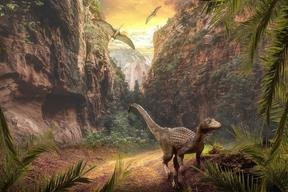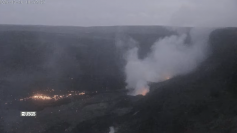Scientists announced the unearthing of a remarkable find along a Welsh beach - 200 million-year-old dinosaur tracks indicating the location may have been a "trample ground" for giant sauropods.
The "very uncommon" tracks, according to scientists, date from a time when Pangea was still intact.
Initially, scientists believed they were part of the beach's "geological process" and were unconvinced they were footprints, but additional examination revealed they were dinosaur tracks from the late Triassic period, just as dinosaurs began to reign dominant on Earth.
The footprints were discovered near the seashore on a beach in Penarth by a member of the public in 2020 and were reported to London's Natural History Museum.
Paul Barrett, a palaeobiology expert at the museum, was involved in the research that was published in Geological Magazine on December 29.
Their discoveries may also shed light on the dinosaurs' behavioral characteristics, such as how they walked and migrated in herds.
According to Barrett, "Because these kinds of footprints are uncommon the world over, we believe this is an interesting addition to our basic understanding of Triassic life within the UK."
The footprints were discovered along a 164-foot stretch of land, and while being "poorly preserved," the fact that the rims of the impressions were of a constant, spaced-out length proved they were those of a walking animal.
In 2010, a team of French scientists inspecting the location confirmed the tracks. Photos of the prints at the time showed "minimal weathering" and toe impressions, indicating that it was an ancient animal.
According to the experts, the large quantity of prints suggests it was a trample ground" for dinosaurs.
"There are signs of distinct animal footprints," Barrett stated in a museum press release, "but because there are so many trackways of somewhat varied widths, we assume there's more than one trackmaker involved."
The researchers stated they can't say for sure what species of dinosaur made the traces, but they think it was a biped sauropodomorph, a long-necked herbivorous dinosaur that was among the largest that ever roamed the planet.
Camelotia fossils have been found in the same strata in southwest England as the dinosaur, which the museum believes is connected to the Camelotia, the museum said.
The tracks will not be displayed in the museum since attempting to extract them could cause severe damage, according to the experts. Instead, they'll stay put until they're eroded away by the tide.






